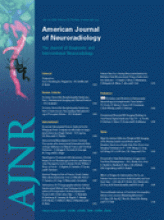D. Armstrong, W. Halliday, C. Hawkins, and S. Takashima, eds. Springer; 2007, $299.00
In a splendidly and lavishly illustrated atlas containing color plates of gross and microscopic neuropathology along with imaging, the authors show the reader the classic pathologic findings in pediatric neurologic diseases. The book is clearly intended not to be one that is read cover to cover but rather one that serves as a reference.
The book is formatted as follows. There are 27 chapters, the first 22 of which and the last 2 of which deal with brain abnormalities. Three other chapters illustrate motor neuron disease, peripheral neuropathy, and muscle disease (all with no imaging). The brain abnormalities run the gamut of all major disease categories, including malformations, perinatal brain damage, vascular disease, neurocutaneous syndromes, lipoidosis, metabolic diseases, degenerative disease, leukodystrophies, infection, tumor, and epilepsy, to name just a few. There is also a very nice 11-page chapter on normal brain development with exquisite stained sections, whole mounts of stained brains, and injected vascular structures.
The written material in each chapter/section is kept to a minimum, because the outstanding illustrated material speaks for itself. Do not expect to see an abundance of imaging, after all, that is not the point of the book. There are numerous abnormalities that we as neuroradiologists see in practice that deal with pediatric neurology, but unless one attends neuropathology conferences year after year, we seldom see important pathologic correlates. Here in a relatively short book (426 pages) with a simple and easy-to-read format is that opportunity. Brief clinical descriptions are followed by the pathology and occasional MR imaging. Of course, if more detailed MR imaging is desired, one would want to consult a volume such as Barkovich's new book Pediatric Neuroradiology in the Diagnostic Imaging series.
So as just one random example, let's look at subacute necrotizing encephalopathy (Leigh syndrome). In Barkovich's new book, all of the needed imaging, descriptive pathology, and clinical information and imaging details (along with a differential imaging) are shown; however, the actual features from a gross and microscopic standpoint are understandably not a part of that book. So with Pediatric Neuropathology: A Text-Atlas in hand, one easily can appreciate the pathologic substrate of this disease. Similarly, comparisons between pathology and imaging can be made in many other diseases when these 2 books are set side by side. This reviewer knows of no better way of cementing the relationship between the features of pediatric neuropathology and pediatric neuroradiology.
In summary, this atlas is highly recommended for those radiologists and institutions involved in pediatric care, particularly pediatric neurology.
- Copyright © American Society of Neuroradiology












